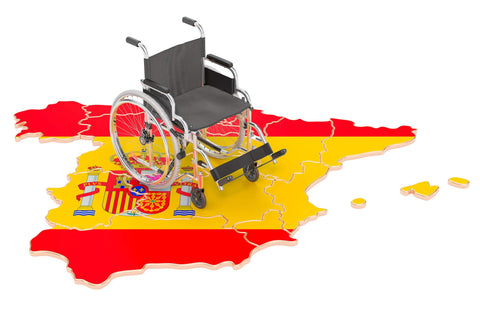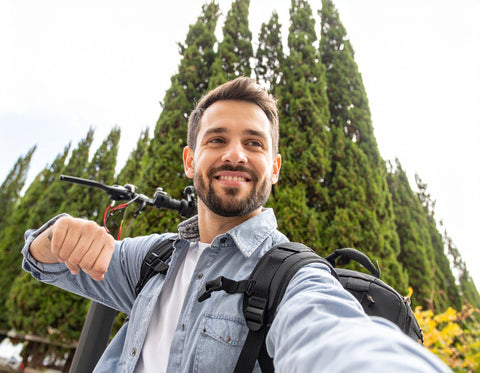Is Madrid Accessible for People with Disabilities?
Accessible Activities in Madrid
Madrid is a lively city celebrated for its rich cultural heritage, stunning architecture, and delicious cuisine. It’s also increasingly conscious of accessibility, offering a growing number of wheelchair-friendly activities and infrastructure. Below, you’ll find tips on enjoyable, accessible things to do in the city, as well as guidance on navigating Madrid’s streets with a mobility scooter or wheelchair.

Wheelchair-Friendly Activities in Madrid
1. Museums and Cultural Sites
• Prado Museum: Equipped with ramps, elevators, and accessible restrooms. Wheelchairs are available for visitors on a first-come, first-served basis.
• Reina Sofía Museum: Features step-free access and elevators to each floor, making it easy to explore Picasso’s Guernica and other modern masterpieces.
• Royal Palace of Madrid: Offers step-free entrances, elevators, and accessible restrooms. Some areas have cobblestone or uneven flooring, but staff can guide you to more wheelchair-friendly routes.

2. Guided Tours
• Look for tour operators that specialize in accessible travel. These companies often provide guides who understand mobility needs and can create custom itineraries, including van transportation equipped with lifts or ramps.
• Accessible city walking tours typically highlight key landmarks—like Plaza Mayor or Puerta del Sol—on routes designed with fewer obstacles.
3. City Parks and Green Spaces
• El Retiro Park: One of Madrid’s most iconic green spaces, with wide paved pathways and numerous rest areas. Some areas are slightly hilly, but overall it’s easy to navigate by wheelchair or scooter.
• Casa de Campo: Madrid’s largest public park features accessible trails and picnic spots. If you plan to explore the park extensively, confirm the accessibility of trails you want to visit, as some sections may be uneven.
4. Shopping and Dining
• Gran Vía: A main thoroughfare lined with shops and restaurants, it has been modernized to improve accessibility. Many stores feature step-free entrances, and sidewalks are relatively wide.
• For a more traditional experience, head to Mercado de San Miguel. While it can get busy, most of the market has flat, tiled floors, allowing wheelchair access to various food stalls.

Where to Drive a Mobility Scooter: Bike Lanes or Sidewalk?
In Madrid, Personal Mobility Vehicles (PMVs)—including electric mobility scooters used by seniors or individuals with disabilities—fall under the city’s Ordenanza de Movilidad Sostenible (Sustainable Mobility Ordinance). Below are key considerations, though it’s wise to stay updated on the latest rules:
1. Safety First
• In bike lanes, maintain a moderate speed and watch for cyclists and other PMV users.
• Signal your intentions when turning or stopping, especially at intersections.
2. Know the Rules
• Madrid typically allows low-speed mobility devices in bike lanes if they don’t exceed the speed limit set for those lanes (often around 20–25 km/h).
• For slower, medically necessary devices, using a wide sidewalk can be acceptable if it doesn’t inconvenience pedestrians. Always check local guidelines to confirm.
3. Use Common Sense
• If a bike lane is overcrowded or feels unsafe, you may prefer a sidewalk if space allows.
• Avoid peak traffic times in busy areas.
4. Respect Other Users
• Keep to the right in bike lanes so faster traffic can pass.
• Move aside if you need to stop, avoiding blockages for others.

Additional Accessibility Tips
• Public Transportation:
• Most of Madrid’s bus fleet is accessible, with ramps and designated areas for wheelchairs.
• Many Metro stations are now equipped with elevators, but not all. Check the official Metro map for stations marked as accessible.
• Hotels and Accommodations:
• Search for properties labeled “accessible” or “adapted,” especially in central areas like Sol, Gran Vía, or Atocha.
• Inquire about step-free entrances, bathroom grab bars, and elevator dimensions to ensure they meet your needs.
• Sidewalks and Streets:
• Historic areas can have narrow or uneven sidewalks. Plan your routes through main avenues (e.g., Gran Vía) or recently renovated neighborhoods where curb cuts and smoother pavement are more common.
• Restaurants and Cafés:
• Many modern establishments offer step-free entrances. Look for restaurants with outdoor seating in pedestrianized zones, which can be easier to access and maneuver around.
In Conclusion
Madrid is making steady strides to become a more accessible destination for everyone. From world-class museums with step-free entrances to spacious city parks with wide pathways, there are plenty of ways to enjoy the Spanish capital without worrying about physical barriers.
• Stay informed on local regulations for mobility scooters or PMVs.
• Plan ahead for any tours or specific activities you want to do, especially if you need special accommodations.
• Use your judgment on whether bike lanes or sidewalks are safer, respecting both your own well-being and that of fellow travelers.
With a bit of planning and awareness, you’ll be well on your way to experiencing the best that Madrid has to offer—comfortably and confidently. ¡Disfruta de Madrid!




